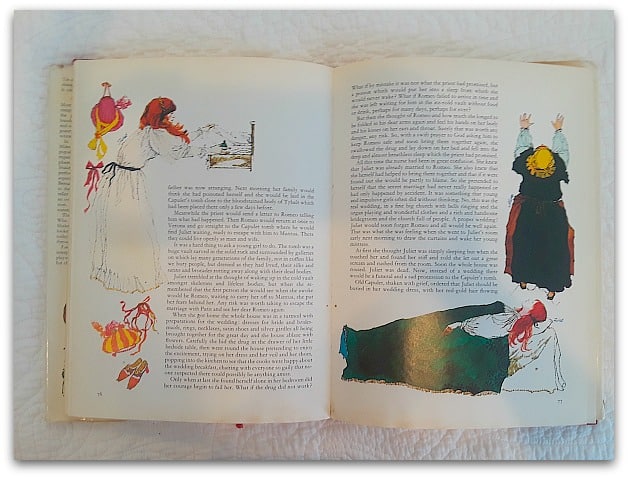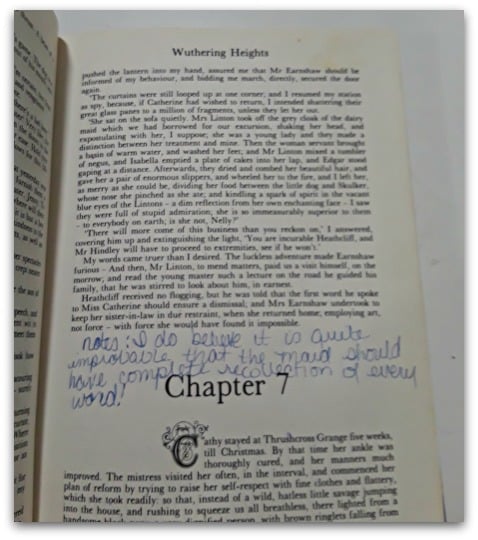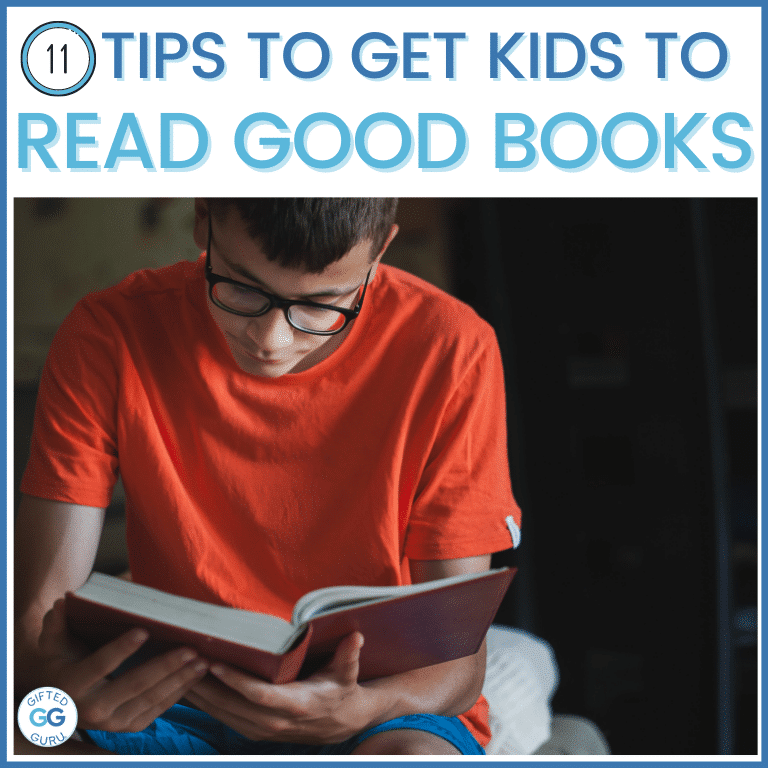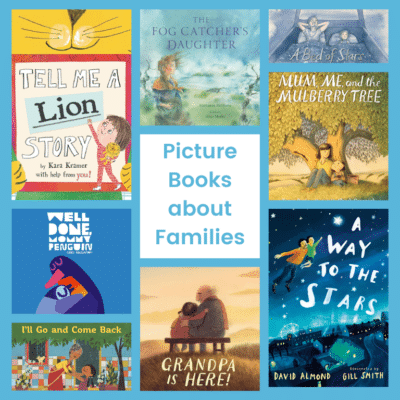How do you get kids to read good books? I’ve come up with eleven tips to get kids to read good books, but first, a little bit about how we end up here.
I wrote about the relevance of reading in our modern world and the benefits of reading classics. An important facet of both of these things is to persuade readers to read great books. Even voracious readers may balk at expanding outside of their reading comfort zone. Of course, we also may need to encourage reluctant readers.
There’s a hesitance among many readers to delve into great books. It’s like telling someone at a Miley Cyrus concert to walk across the street with you to an opera (Note: Miley Cyrus is my 9th cousin, once removed, so I’m not hating on my family, just giving an example.)
Where does this reluctance begin?
I think it’s Captain Underpants and his ilk.
Now, I don’t mean to suggest in any way that kids should not be allowed to read junk books.
I read junk books all of the time. Regency romance, anyone?
But like our food diets, our book diets should be varied, and they should contain mostly healthy things.
Maya Angelou said, “Any book that helps a child to form a habit of reading, to make reading one of his deep and continuing needs, is good for him.”
I’m not sure that books with no power actually develop the habit of reading to which Dr. Angelou refers. It’s possible they just develop a habit of Captain Underpants.
It may not transfer. It may not be a gateway book.
In our desire to encourage reading, we sometimes get caught in the trap of thinking that if a child likes graphic novels/ comics/ Captain Underpants/ Twilight/ fill-in-random-book-genre-here, the reader has to stay there forever.
We can encourage reading of quality books, and we should.
Wordsworth wrote, “What we have loved, others will love/ and we will teach them how.”
I live by this as a teacher. My job isn’t just to teach kids content; it’s to teach them how to love it.
I was surprised and dismayed at the pushback I got against the importance of reading classics from teachers who said kids don’t like them.
Friends, if you teach language arts and don’t know how to lure a student into loving challenging, classic literature appropriate for their age, you need to figure that out. Quickly.
If we don’t, who will teach them?
And it must be taught. Nearly everything is an acquired taste. The reasons people like what they like are fickle and weird. Get a taste of what I mean from this NPR interview with Paul Bloom, author of How Pleasure Works.
11 Tips to Get Kids to Read Good Books
So now to my eleven tips to get kids to read good books. Lecture’s over.
1. Learn how yourself.
If you don’t love good books, you’ve got to figure it out before you can teach it. It’s like the oxygen mask on the airplane. Use some of the other tips below to help yourself, not just kids.
It starts with us, in the way that everything does. Sorry.
Kids can detect insincerity and hypocrisy a mile away.
My husband and I recently saw a Liam Neeson movie in which he plays a father who reads every single book his son read in high school. It was a powerful bonding thing for them, and it can be for you, too.
Our children (students or actual children) should not ever hear us say, “I hate reading,” or anything like unto it.
Want someone to guide you? For less than ten bucks, you can learn how to really read a book with a copy of Adler & Van Doren’s How to Read a Book. If your library has a copy, it’ll be free. Free!
2. Get the back story.
We tend to like what we know about.
My parents are taking a Mediterranean cruise soon, and while I’m binge watching packing tips videos on YouTube for my own vacation, my mom’s binge reading about the locations they’re going to – history, literature, etc. Who will enjoy their trip more? Neuroscientists would say my mom, hands down.
When our brains have positive context for input, it responds with pleasure to that input.
So get an annotated copy, read a bio of the author, look at videos of the locations mentioned, understand the context, watch the movie if you must…do what it takes to get to know the author and book before you begin and teach kids to do the same.
3. Develop the skills of deep reading.
Deep reading takes skill and time to develop. I already had a masters in teaching English when I grew in my reading practice from a series on reading hard books that Oprah had in her magazine (random, I know). My favorite from the series was this article on Moby Dick.
The term “deep reading” was coined by Sven Birkerts in The Gutenberg Elegies: The Fate of Reading in an Electronic Age. He said, “Reading, because we control it, is adaptable to our needs and rhythms. We are free to indulge our subjective associative impulse; the term I coin for this is deep reading: the slow and meditative possession of a book…We don’t just read the words, we dream our lives in their vicinity.”
Isn’t that just lovely? “We dream our lives in their vicinity…” It makes you want to go buy that book right now, doesn’t it? No shame. I just did.
Part of deep reading involves having time and a comfortable place to read (although dedicated readers will read anywhere and everywhere, it’s true). If we’re trying to help kids develop a love of reading good books, we need to make sure we’re making it possible for them by providing an environment conducive to it.
4. Read aloud.
Our listening vocabularies develop much more quickly than our production vocabularies, so kids can listen far above their ability to read themselves.
I’ve written about when we lose readers, and this is one of those times. As kids learn to read, don’t stop reading aloud with them.
In addition to the listening/decoding vocabulary difference, when we’re reading aloud, we can stop and explain what’s going on. We can go back and break down complex passages.
Not all great books make great read alouds, of course, but many do.
One possibility is to listen to the books aloud together in the car. You can pause and clarify or discuss or define, or you can just let the words wash over you in their gorgeousness.
You don’t need to read the whole book out loud necessarily. Sometimes it’s helpful to read enough to get them started. A taste to whet the palate.
In commenting on a study done by Scholastic, Liz Baker of Scholastic said, “As they become independent readers, we tend to let them go, but even kids in older demographics love nothing more than that time with their parents. We’re blown away that kids time and again said the most special time they recall spending with a parent is reading together.”
5. Manage expectations.
People, this isn’t a reality tv show that edits the footage to create non-stop action. We have to make sure readers understand the idea of the slow burn.
Young readers need to be taught the difference between plot- and character-driven novels. If they’re expecting something to move from event to event like a wires on utility poles, they may feel like nothing is happening. Help them understand that often what is happening is happening inside of someone.
6. Book Groups are great.
I’ve written about how to organize book clubs for kids, and they’re fantastic ways to get kids engaged in reading. Book groups can be virtual as well, and yet there’s something about the sociality of engaging face-to-face with others who have experienced the same book as you have.
It’s important to find a good match. I’ve had hit-and-miss experiences with book groups. If people don’t actually read the book, it annoys me in manner of rock in my shoe.
A book group can be be informal, and it can be very small. A family can have a book club.
The idea is to make it social as well as cerebral.
A large part of the joy of reading good books is connecting with others who have read them. It’s the sharing. If you would like to get more into classics, connect with others.
Here are some ideas:
- Follow Farnam Street or Ryan Holiday to learn to become a better reader.
- Follow cool bookstores on Twitter.
- Join an online bookclub like Andrew Luck’s. Luck is the quarterback for the Indianapolis Colts and a big, big reader. Every month he shares a book for kids (“rookies”) and grown-ups (“veterans”). Readers use social media to engage with other readers.
- If you like to read, connect with me on Goodreads and let’s share what we’re shelving.
7. Editions and context matter
The Christmas I had just turned ten, my father gave me a lovely copy of Little Women. Its cover illustration captivated me. It was a very thick book, especially for a scrawny ten-year-old, but its very grown-upness appealed. I devoured it, and I still have it.
Hold on; I’ll go get it.

I just snapped this picture of it (that’s my bedspread!). See how Mrs. March is leaning towards them? Ah, I just love looking at the cover.
Here’s what’s inside on the flyleaf:

My father died, but all I have to do is open this book and know that I have that love always. (Sorry the picture is blurry – the paper is actually a very dark navy, and it doesn’t photograph well.)
I loved the illustrations in the book so much. I stared at them for hours. Here’s an example:

Ahhh…I just wanted to crawl into that book and live there, and I still do.
You can actually still find this exact edition, in case you’re interested.
There is power in the aesthetics of books.
The way the book feels is important. If we only give kids old, yellow books we send a message. Similarly, heavy, hard-bound editions may feel intimidating. Go with what the child will like.
If checking out books from the library, make sure it’s something that can be held and read comfortably.
Give a beautiful book and you send a message. Maybe, just maybe, it will turn out to be the book, as this one is for me.
Along with aesthetics, translations are important, too, so before picking a volume in transition, do a little research on the best translation.
8. Shorten them.
Feel free to introduce children to classics with abridged editions or those specifically for young readers. This is appropriate, not a cop out.
My mom gave me Bernard Miles’ Favorite Tales from Shakespeare (luckily still available!) the year after my dad gave me Little Women.
I loved the illustrations and the simplified telling (prose, not verse was good for me when I was eleven).

And you guessed it. I still have it. I’ll go lay it on my bed and take a picture.
This is Romeo and Juliet to me. No matter how many times I’ve taught it to 9th graders using a textbook, this is the story in my mind. I kept this book in my classroom, actually, and read this version to students first before they encountered the play.
See the water stains at the botoom of the pages? That’s love water.
Usborne publishes great editions for young readers that include classics (the Young Reading Series 2 is where they really start), and so do many publishers.
Just as you would get a bike their size, get books their size as well.
9. The power of proximity
It’s important that there be books in the home. I have known people who have had the attitude that you can just check books out from the library, so why own them?
I have to breathe very, very deeply when I hear people say that.
The research shows that books in the home are vitally important for children. Here’s one statistic to persuade you:
“A child from a family rich in books is 19 percentage points more likely to complete university than a comparable child growing up without a home library.”
And this is after accounting for differences in wealth, etc.
Horace Mann said, “A house without books like a room without windows. No man has a right to bring up children without surrounding them with books…Children learn to read being in the presence of books.”
Can I get an amen?
Cicero shared a similar sentiment: “A room without books is like a body without a soul.”
When books are available, when they are a part of the living of the life of those in the home, children are less likely to find them intimidating. So go ahead – leave books lying around and encourage random acts of reading.
10. Feel free to abandon
Some will disagree with me on this, and that’s okay. I think that it’s fine to abandon a book that isn’t speaking to you and come back to it later (or not).
My least favorite novel everyone else loves is Wuthering Heights. I tried unsuccessfully to read it at least a dozen times before I finally slogged my way through in grad school. It’s true.
I didn’t like the flashback style. I didn’t like the author’s phrasing. Emily Bronte could do no right in my young reader eyes.

Here’s a picture of my fifteen-year-old’s skepticism about the housekeeper’s auditorially eidetic memory. Yeah, I wasn’t impressed. So, I put it down somewhere around page 42 (that’s where my bubble handwriting in margins stops), and left it there for a few years.
I came back …and back ….and back ….and then finally I went and bought a fresh, new copy, untainted by my former attempts and made it through. I still didn’t like it (I way prefer Charlotte to the other sisters in that writing family), but I read it.
If a young reader really hates a book, find another and come back later (maybe). Give it the ol’ college try first, but don’t force love where none is to be found …yet.
11. Get cool reader stuff
You all know how I feel about office supplies. I feel similarly about bookish supplies.
I love cool bookmarks (my current faves are clips with ribbons).
I love book tshirts. Have you seen the ones at Litographs where they print the entire book on a tshirt? I want them all. All of them, I say. Except Wuthering Heights.
Consider things like:
- totes to carry books to and fro
- fun bendy book lights
- book plates for the faves
- the book time bookmark that tracks how much time you read (cooler than it sounds)
- posters of classic books or the movies made from them
- coloring books from their fave books (like this Little House on the Prairie one)
- toys like paper dolls or Lego sets
- book pajamas (Mom, I would like these Madeline ones, please.)
- books about people who love books like Sarah Stewart and David Small’s The Library
- print free printable bibliphilic book posters and sayings (here’s a Google image search to get you started) and hang them up
We love the accoutrements of our interests, so bring a few book-lover things in to the young reader’s life.
Those are my ideas, and I hope you’ll share yours as well.
Okay, enough with this list. It’s time to go read.

Note: Sometimes I use affiliate links, which means that if you click through and buy something, I get a few pennies (to buy more books!). It will never cost you anything extra.




